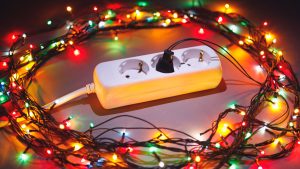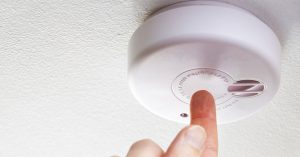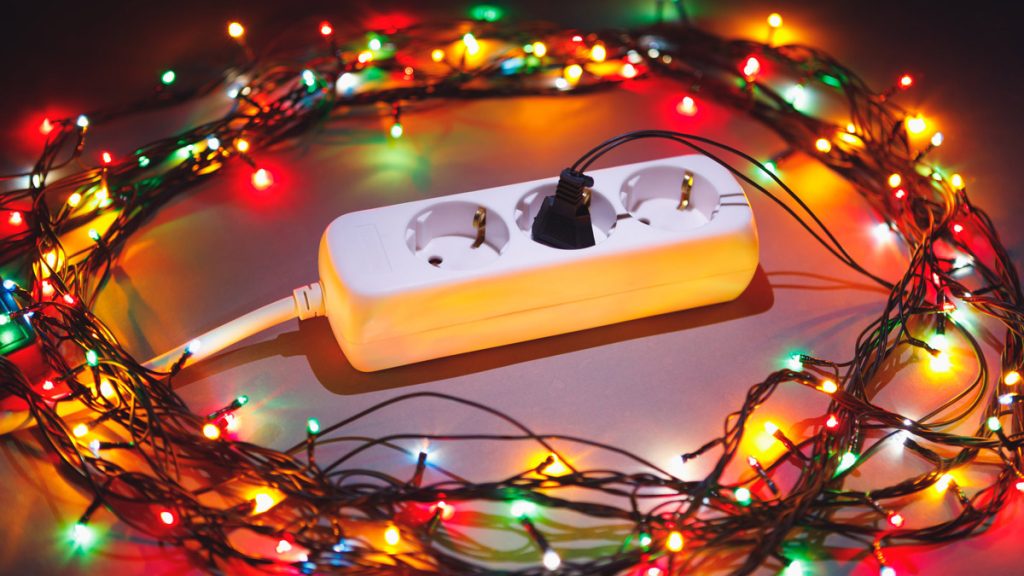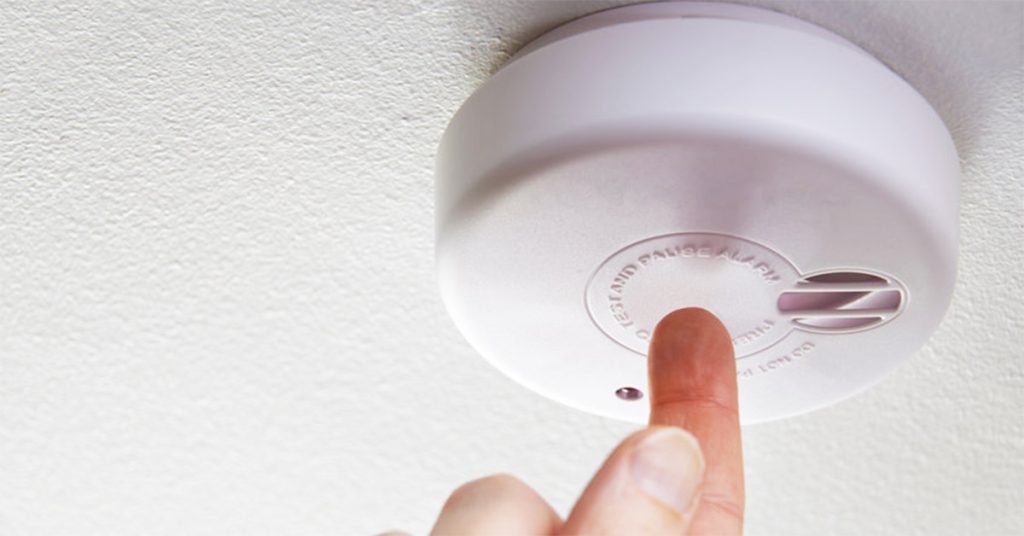Posts Tagged ‘fire injuries’
Deck the Halls, But Decorate Safely

Immediately replace holiday decorations and power appliances that are in poor condition. Another year of use could result in injury.
Though a time for joy, the holidays can also set the stage for potential injuries, as we rush, stress, decorate and wrap. Surprisingly, you may discover some of the most dangerous hazards right in your own home, among the holiday decorations and boxes you pull of storage to deck the halls.
While colorful and festive, holiday decorations contribute to many injuries each year. During 2019, nearly 15,000 people were injured in holiday decorating incidents and treated in emergency rooms, according to the Consumer Product Safety Commission (CPSC). Nearly half of these injuries involved falls. Many others are injured each year after the decorations are hung, by defective or poorly-made products or decorations that are set up unsafely.
Unlike some situations, you have control of your home and can take steps to protect yourself, your family and holiday guests.
Start by simply walking around your home and checking your holiday decorations and your Christmas tree, if you have one. Make sure all your decorations are out of reach of young children and put away all tools, such as ladders and hammers, or boxes you may have left out while decorating.
Watch for unsafe products, such as those which arrive in questionable packaging or contain broken or small parts. Manufacturers have a responsibility to design products and provide reasonable warnings for safe use. There can be a high cost when manufacturers or others in the supply chain neglect their responsibilities in the rush to sell, or when individual sellers on Craigslist or Facebook Marketplace offer used goods without the original packaging. But it can happen and ruin a family’s holiday – unless you recognize the risk and act to prevent injury.
Use Caution While Hanging Holiday Decorations
Still have some decorating to do? Remember not to rush. During a season of merry and bright, you want to be safe and avoid injury. Holiday decorating can cause a range of injuries, from passing muscle strain to broken bones, though injuries can be much more serious, resulting in head injuries and even permanent disability. At a minimum, many people experience some muscle strain the next day after reaching and climbing. Planning can help!
So make a decorating plan. Team up with a family member or a friend so you have help carrying heavy boxes or using ladders or step stools.
Consider whether you are physically up for holiday decorating. As you get older, you may not be able to take on the same physical challenges. Acknowledge this before you start.
While you may be thinking, “Bah humbug,” you can still decorate. Just make a few adjustments for safety or to account for your late start. You can hang fewer holiday lights and hang them lower so you can stay off ladders, which are associated with many fall injuries during the holiday season.
Decorators of all ages should consider the cold weather. Even without snow or ice, you face a greater risk for muscle strain and injury during cold weather. It is never safe to climb a ladder in snow, ice, rain, winds or at night.
Water Your Christmas Tree Regularly
If you celebrate Christmas, your tree is the center of your holiday season, where you gather for family photos. But you should only purchase a live tree if you are home and have time to care for it.
Just as they bring joy, Christmas trees can cause devastation if they dry out and catch on fire. Each year, fire departments respond to an average of 160 Christmas tree fires across the U.S., resulting in injuries, deaths and millions of dollars in direct property damage, according to the National Fire Protection Association. These experiences can change a family and the holidays forever.
If you have already brought your tree inside, you may have cut 2 inches off the bottom before placing it in the tree stand. Now, your concern is watering the tree.
Regularly water your Christmas tree and keep it away from fireplaces and heating devices, which can accelerate drying out. The National Christmas Tree Association recommends that families check their tree daily and make sure the water level does not fall below the base of the tree.
Your Christmas tree stand is one of your most important holiday decorations in terms of safety. Choose one which can hold enough water to support your tree’s needs throughout the year. As a general rule, the association recommends stands provide one quart of water per inch of stem diameter.
If you are not up for a live tree, go artificial. Make sure your artificial Christmas tree is marked “flame-resistant.”
Watch for Defective Products and Check Holiday Extension Cords for Safety
Closely examine holiday decorations and equipment before you start decorating. Your trusted tools and supplies may have been recalled for safety since your last use or may not work well with newer products you have purchased.
Check ornament boxes for cracks; make sure ladders and foot stools are in good working condition, if you have to use them. Extension cords should be free from damage and cracks.
This is easy to forget. Many of us reach for extension cords after we start setting up decorations, not first. But here are a few points for safety on extension cords:
- Extension cords should be tested by a nationally recognized testing laboratory, such as Underwriters Laboratories (UL), Intertek (ETL) or CSA Group Testing and Certification. Similarly, holiday lights should also be tested.
- You should only use one extension cord at the most, so measure and buy one that meets your needs.
- Make it a habit to check for safety recalls before you plug your holiday extension cords in. Just visit www.cpsc.gov and search for extension cord recalls
- Replace your extension cords every few years. You trust these cords to light up your holiday and protect your family and home over the years, yet you expose them to more wear and tear than other products when you string them around your tree, furniture and take them in and out of storage each year.
Keep a Safe Home for Holiday Guests and Children
Consider what may be in a child’s reach or limit an older guest’s mobility. Move ornaments and decorations with small pieces and sharp edges out of reach. Remember children are curious and may pull at decorations or small broken lights found under a tree or plastic packaging you may have dropped while wrapping gifts. A child could find these, put them in their mouth and choke or suffocate – the worst thought for the holiday season.
Look beyond your holiday decorations as well. You may not be able to see all the hazards, so think about how your home products are powered. For example, flashlights and electric holiday lights may contain small button batteries, which a young child could find and swallow. So may your remote controls, including those you use to manage your holiday lights, and these can be too easy for children to open. You may treasure the holiday cards you receive, but these can also tempt children. Tuck away cards with removable pieces.
It is critical to think about fire prevention, especially before you invite guests into your home. Take a moment to test your smoke alarms. As we mentioned above, keep holiday decorations away from working fireplaces and stoves. Turn these appliances off when you have guests over and skip candle use for holiday ambiance or at the holiday meal.
Finally, we often hang or position decorations near entrances or hallways where people can enjoy them. This can bring joy, but block access to essential exits if a fire ever broke out. It is best to enjoy these somewhere else and keep all entrances and hallways clear.
Free Legal Consultation – Boston Personal Injury Lawyers
Breakstone, White & Gluck specializes in personal injury law, representing those who have been injured or killed by negligence across Massachusetts, including in Boston, Cambridge, Somerville and Arlington.
With more than 100 years combined experience, our lawyers have been recognized among the top personal injury attorneys in Massachusetts and New England. We represent clients in all areas of personal injury law, including injuries and wrongful death resulting from defective products.
If you have been injured by someone else’s negligence, learn your legal rights. For a free legal consultation, contact Breakstone, White & Gluck at 800-379-1244 or use our contact form.
Take a Simple Step for Safety: Test Your Smoke Alarms When You Set Your Clocks Back This Weekend

Protect your family and home. Test your smoke alarms when you set the clocks back for Daylight Saving Time on Nov. 7.
Stay vigilant about smoke alarms and protect your family this winter. This coming Sunday – November 7th – Daylight Saving Time ends. As you set your clocks back, we encourage you to also test your smoke alarms and carbon monoxide detectors.
It is critical that your smoke alarms work as we approach winter, when we spend more time indoors, cook for the holidays and there is a greater risk for home fires and fire injuries.
Half of All Massachusetts Fire Deaths Occur in Homes Without Working Smoke Alarms
In 2020, half of all Massachusetts fire deaths occurred in homes without working smoke alarms, the state fire marshal’s office announced earlier this year. This was based on preliminary data.
End-of-year data showed there were 29,641 fires across Massachusetts in 2020, a 16 percent increase over 2019. The number of civilian deaths rose from 39 in preliminary data to 44, up from 42 in 2019. There were 245 civilian injuries and 594 fire service injuries in 2020. Smoking was the leading cause of residential fire deaths in Massachusetts, followed by electrical and cooking fires.
The traditional reminder has been to replace your home’s smoke alarm batteries twice a year – at the start and end of Daylight Saving Time. You should still do so if your smoke alarms operate on regular batteries.
But in 2016, the state of Massachusetts updated the fire safety requirements, steering more homeowners toward newer smoke alarms designed to last 10 years without a battery change. So not everyone needs to change their smoke alarm batteries.
Testing is still essential. If a fire breaks out, you may have seconds to escape and your smoke alarm has to work for you, your family, loved ones and roommates. Commit to test your smoke alarms and carbon monoxide detectors monthly and twice a year when you change the clocks for Daylight Saving Time. This is a simple step – just press the test button.
Read Your Product Manual and Learn the Sounds of Your Smoke Alarm
Read your smoke alarm product manual. Make sure you recognize how the alarm sounds – when it chirps to alert you of failing batteries and in an actual emergency. If you do not know, search for the product information online or call the manufacturer. The Massachusetts State Fire Marshal’s office also shared safety tips as part of Fire Prevention Week earlier this month. The theme was “Learn the Sounds of Fire Safety,” the sound of your smoke alarms.
Involve other family members in this, especially older adults. Those 65 and older are highly vulnerable when fires break out, accounting for more than 40 percent of all fire deaths in Massachusetts during 2020, according to the state fire marshal’s office. Older adults may seem healthy, but they may suffer from a medical condition they haven’t shared or side effects to medication. Another potential barrier is untreated hearing loss.
One in three people between age 65 and 74 suffer from hearing loss, according to the National Institute on Aging. When they get older, nearly half of all adults age 75 and older have difficulty hearing. Step in and help older adults. Offer to take them to their primary care doctor and learn about smoke alarms for those who are deaf or have difficulty hearing.
Check for Smoke Alarm Recalls
Unfortunately, like other products, there are times when smoke alarms are recalled due to defect. In May 2020, the Consumer Product Safety Commission announced the recall of more than 220,000 Kidde TrueSense Smoke Alarms and Combination Smoke/Carbon Monoxide Alarms. These alarms were newer models, sold between May 2019 and September 2020.
When you test the batteries at Daylight Saving Time, you can check the Consumer Product Safety Commission (CPSC) website for smoke alarm recalls. Take time for this, even if you have registered your smoke alarm with the manufacturer. While you are there, check for product recalls involving unsafe winter heating products, including electric blankets, space heaters, children’s pajamas and other products. This is an easy but important step for safety. If you own any of these products, take the recall seriously. Remove the defective product from your home now so no one reaches for it on a cold night.
One Survey: Many Americans Are Not Testing Smoke Alarm Batteries
While this is a simple step, not everyone is testing smoke alarms. Earlier this year, a Consumer Reports survey found roughly one-third of all Americans could not recall when they last tested their home’s smoke alarm. About 25 percent could not recall replacing their smoke alarm batteries, while more than half could not remember when they had installed the devices. But this doesn’t have to be the case. You can easily test your smoke alarm and pull out the product materials right now.
About Breakstone, White & Gluck – Boston Personal Injury Lawyers
At Breakstone, White & Gluck, our Boston personal injury lawyers have over 100 years combined experience representing those injured in premises liability accidents, construction accidents, structure fires and fires caused by landlord neglect. Our attorneys have represented clients, including college students, tenants and their families after serious injuries and wrongful death in fires.
If you or a loved one have been injured or killed in a fire, learn your legal rights. Contact our attorneys at Breakstone, White & Gluck at 800-379-1244 or 617-723-7676 or use our contact form.



